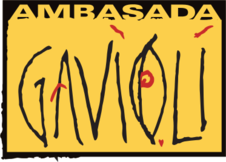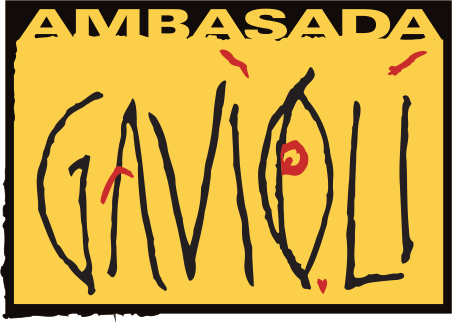Depot:Ambasada Gavioli
Archival article
Continuously running since 1995, Ambasada Gavioli is a renowned nightclub with a very distinctive interior and a prominent history. Featuring the biggest names from techno, house and other dance music scenes, the club is held to be the most important institution for the development of rave and clubbing culture in Slovenia.
Situated in the coastal town of Izola, it is frequented by clubbers from all over Slovenia as well as from some neighbouring countries. Currently its programme is run by Fetch The Vibe.
History and concept
Conceived in the early 1990s, the artistic direction for the warehouse that was to became Ambasada Gavioli was at first rather unclear. In its initial stages, it was supposed to be some sort of a hybrid discotheque with an intertwined programme of cabaret, opera, circus and electronic dance music. This did not work out as planned and soon after it set off, the club embraced the then still embryonic techno and rave subculture.
Still, some of the early ideas persisted and the weekly clubbing events were usually interspersed with spoken word and extravagant performances by acrobats, dancers, MCs, jugglers, and the like. The years until the early 2000s are nowadays hailed as the "golden years" and gained the club a cult following in Slovenia and in the wider region. Besides artists from all over the world, the prime attraction was the club's merging of an Ibiza-styled clubbing experience with the counter-cultural aspects of warehouse raves.
Architecture
The man who projected the club was the Italian architect Gianni Gavioli, and with nightclubs as his forte, he was given free reign for this project. This resulted in a striking place that features numerous allusions to Mediterranean culture, from Venetian Gothic architecture to the lavish mosaics of Antonio Gaudi. With its over-the-top decoration and the many citations from territories like circus, Etruscan civilization and Shakespeare plays, it is a vivid example of the post-modern architectural style that was at that time still in vogue.
Due to the strong imprint of the author, the Irwin arts collective suggested the name of the new venue to be Ambasada Gavioli (Embassy of Gavioli). The group later also introduced the official flag of Ambasada Gavioli, and this contemporary arts connection is quite indicative about how strongly Ambasada differed from the concept of a plain discotheque.
The club has the capacity to accommodate up to 2500 people. It has two floors, with the main one named as the "dance lounge" and the smaller one upstairs (originally designed to be a restaurant) called "mezzanine" .
Music programme
Ambasada Gavioli hosted the better part of the big names in electronic dance music. During its first few years, DJs like Laurent Garnier, Tedd Patterson, Sven Väth, James Ruskin, Misjah, Robert Hood, DJ UMEK (spinning as a resident DJ) and Bob Sinclair (the first time still as a support DJ and not – as in his many later visits – a well-known head-liner) were already part of the programme, as were some more experimental Slovenian acts like Random Logic. The music programming was done by Valentino Kanzyani, who was at that time also a resident DJ.
Other DJs from the first decade include David Morales, Erick Morillo, Barbara Tucker, Takkyu Ishino, Carl Cox, John Digweeed, Westbam, Dave Clarke, etc. Besides techno and house, goa trance, progressive and drum'n'bass were also present, but to a much lesser extent.
In more recent years, Ambasada Gavioli was visited by Fatboy Slim, Shapeshifters, David Guetta, Martin Buttrich, Paul Van Dyk, Paul Oakenfold, Tiësto, Loco Dice, Pete Tong, Dubfire & Sharam (Deep Dish), Mousse T, Sonique, Armnin Van Buuren, Axwell, Magda, Frankie Knuckles, Roger Sanchez, Marshall Jefferson, Luciano and others.



